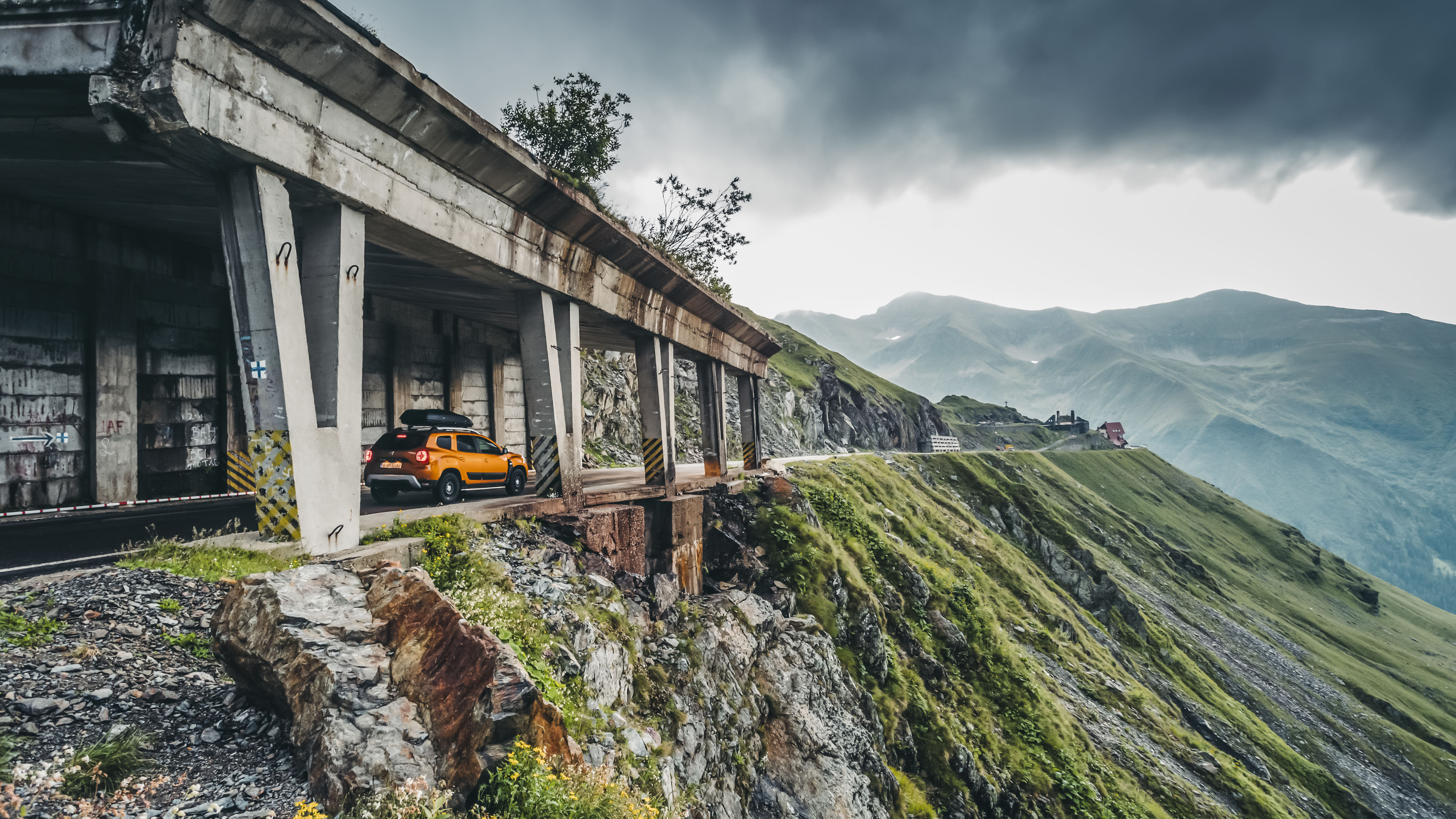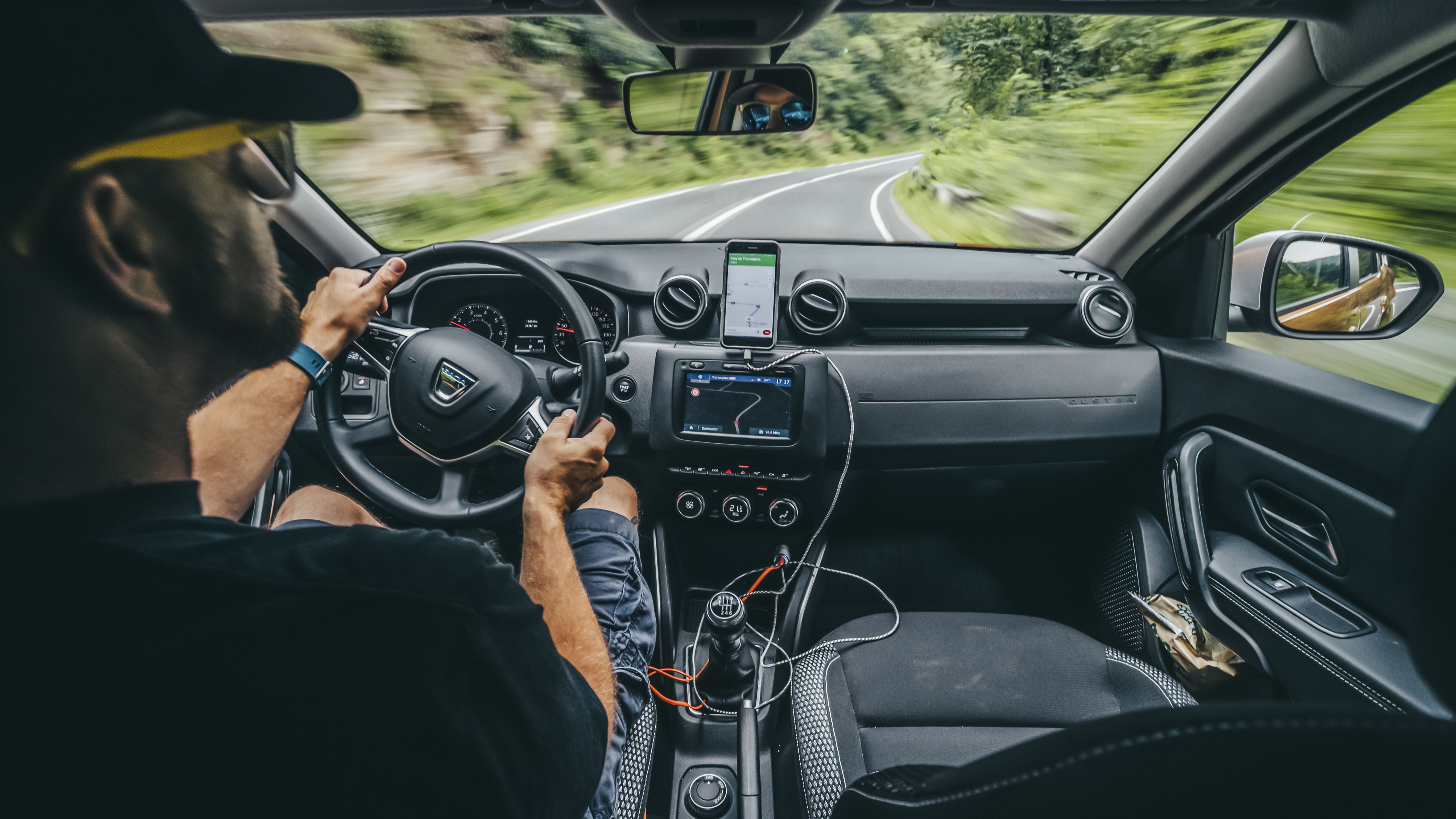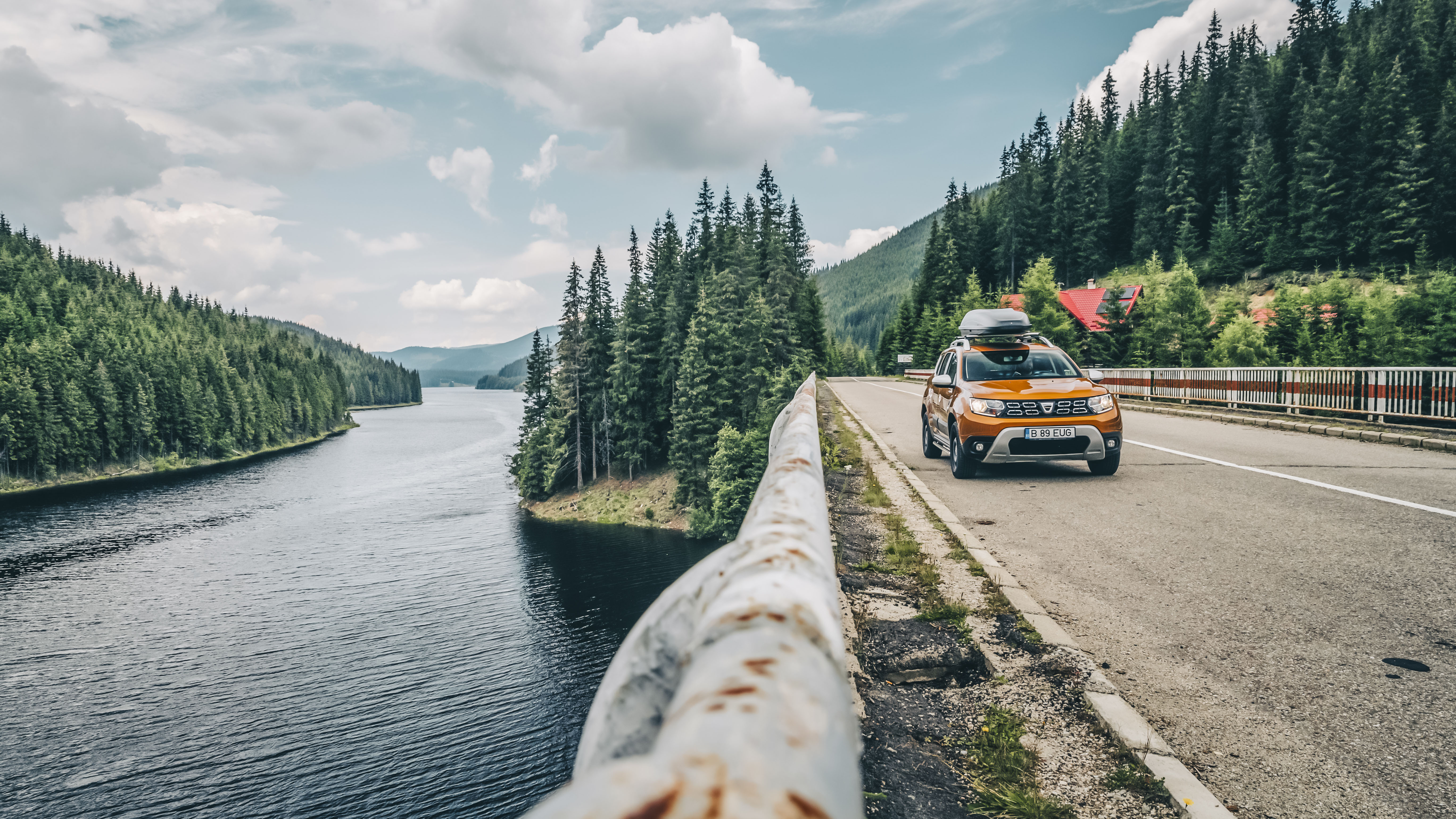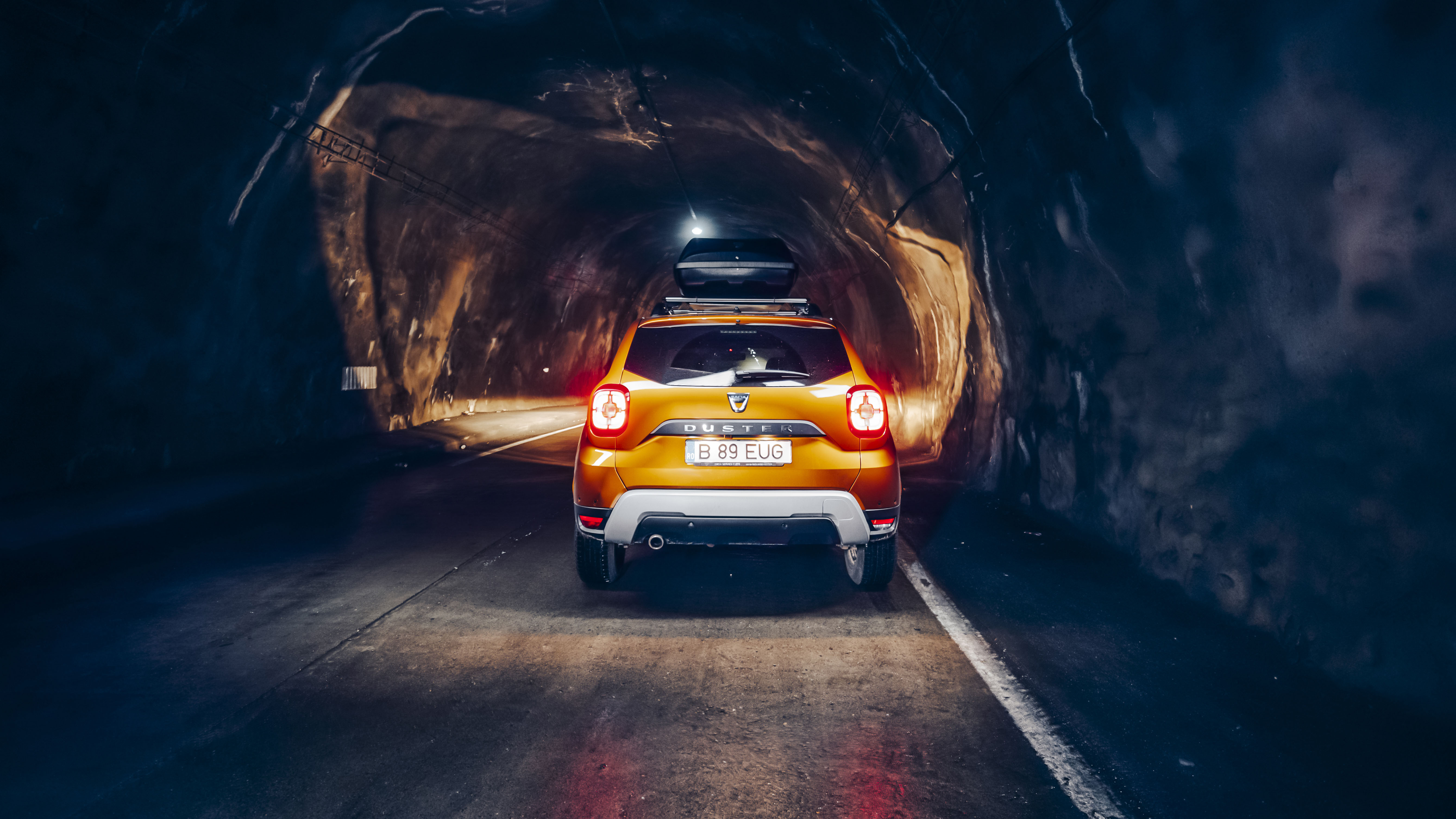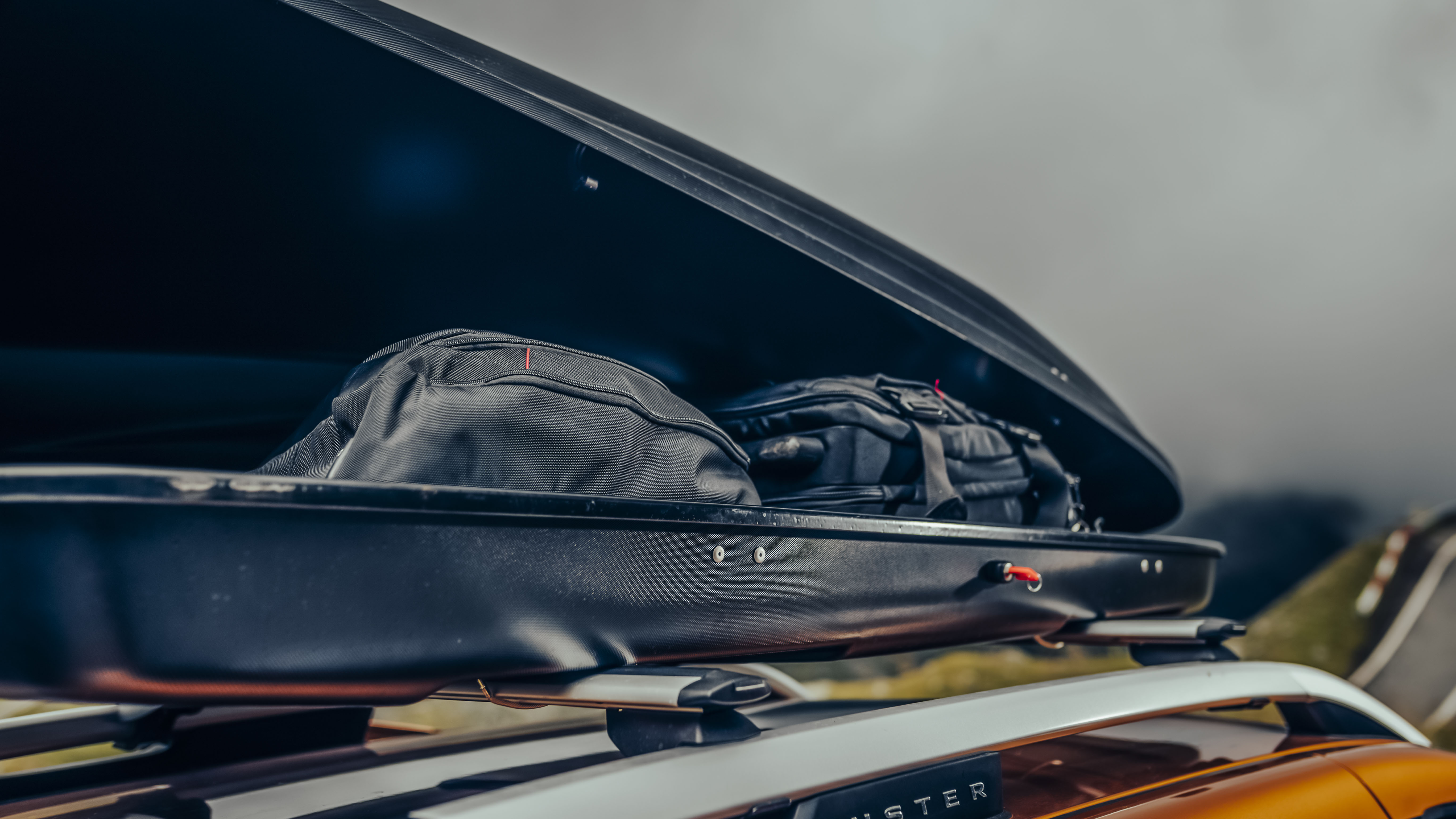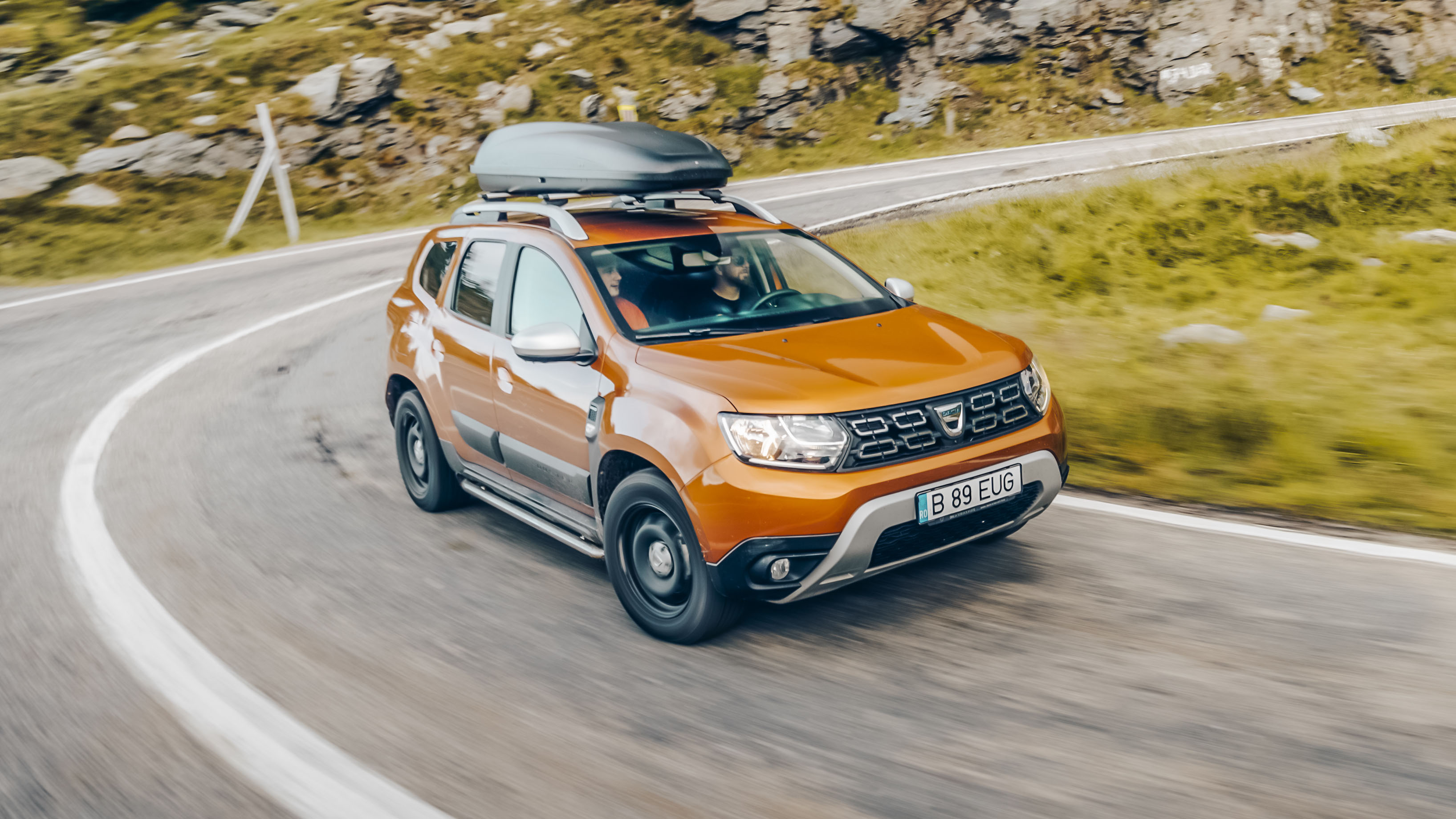
Lost boys: Dacia Duster in Romania
The Carpathian Mountains. Home of the undead, and several life-affirming mountains...
Having just nearly driven off the side of a woefully under-signposted 400ft cliff, I’m not sure whether my elevated heartbeat is down to the view, or the fact that I’ve just nearly absent-mindedly BASE-jumped a small SUV off a Transylvanian mountain without a parachute. It could be either, because if there were global rankings for views, then this one would be somewhere up there in the medal positions, being quietly investigated for cheating. This is not just a view. This is A View. Romania, as it turns out, gives serious vista.
Thing is, I’m not sure exactly where we are. I know we’re somewhere north of Rânca on the Transalpina DN67C, but not life-bet positive whether that means the counties of Gorj or Vâlcea. We fired west out of Bucharest’s seventh-circle-of-hell traffic for a bit, then grabbed the bottom of the 67C somewhere around a place called Bengeşti, but at one point we were headed to a place called Vulcan, so anything is possible. Whatever. Despite nearly making a fatal touring mistake, we’ve found a grand spot to pause.
Words: Tom Ford / Photography: Dennis Noten
There’s a low mist belted around the waistlines of the mountains, making them look like they’re floating on a sea of cotton wool. The craggy tops are raked by fingers of fog, and there’s a palpable sense of fairy tale to the whole scene – something very definitely other – inspiration leaking out at the edges like an over-filled sandwich. If a landscape could be described as Gothic, then this is it, a slice of the Carpathians that punches up through the soft green palm of the valley like a rocky knuckleduster. It’s no surprise that this is the place where Bram Stoker set part of his novel Dracula, based – in part, at least – on local legends of the strigoi, unquiet spirits that live inside normal people during the day and only come out at night to cause mischief. It’s beautiful and spooky at the same time. Spookiful.
It’s certainly a monumental feast for the eyes, and below, I can see a looping stretch of blacktop that curls casually through the forest like a thrown rope. Like a challenge. The kind of place that has a video where the tune that fades up is Ride of the Valkyries. Obviously, to make the most of such an epic landscape, one requires a vehicle to match it, something to stir the soul and set the senses on fire. Something sporty, rear-wheel-drive and lightly overpowered.
An orange Dacia Duster with a roofbox is not that vehicle.
Except that it kind of is. OK, so it might not be the most extreme car for a roadtrip to somewhere with such obvious driving potential, but there’s method to this madness, because you can have extraordinary adventures in very ordinary cars. And we’re here to prove it. The Duster is the perfect car for this place. One, because we have a quietly able 4x4 model and have been pottering around off-road (hence the close call with the mountainous air gap), and two, because it is made here, and historically eponymous. In ancient Romanian, ‘Dacia’ means ‘home’, and home means here, literally – Dacia being the area that stretched from the ‘Black Sea to the Balkan mountains and Bohemia’ in the 1st century BC, and later chopped up by the Romans in their orgy of conquest a few hundred years later. The Dacian tribes called ‘Carpes’ or ‘Carpi’ also supposedly giving their name to these hunched, grouchy Carpathian mountains that lurk as the backdrop to the plains of Transylvania. The ones that are making my eyes happy.
You’d have to be on a milk float not to enjoy this, and the Duster is hilarious
These days Dacia-the-carmaker’s main operation is based in Mioveni, to the south east of where we are, and has progressed from belting out outmoded Renault 12s in 1966 to officially sheltering under the corporate wing of Renault in ’99, churning out cheap, useful and slightly unsexy products ever since. And this second-generation Duster is properly new, sharing precisely no body panels with the previous car, getting a raft of improvements and still managing to start at £9,995. In fact, you can get a basic Duster 1.6 SCe Access for £90 a month with £1,800 deposit over three years (you’ll pay just under eleven grand for it, in the end). Just numbers, until you realise that’s £2.90 a day. Or the price of the usual overpriced cappuccino from StarCostaBucks. Except. Except the basic Access Duster comes with front-wheel drive only, no radio and no aircon. So the Duster you actually want is about £13,595. Which is still cheap, but that version still doesn’t come with a 500bhp V8, so I’ll have to make do with a 1.5-litre diesel with an adequate 115bhp. Drag racing anything is pretty much out of the question, and downchanges from the surprisingly sweet six-speed manual a regular occurrence. But that’s not to say that you can’t have fun. You just have to commit a bit more, and go somewhere interesting.
Currently, I think we’re maxing out on the latter. The Transalpina (the ‘Drumul National’ 67C) that runs the margin between Sibiu and Alba counties is both Romania’s highest road and its most easily overlooked, given its proximity to the second-highest and arguably more picturesque Transfăgărășan (more prosaically the DN7C) in Cârțișoara. But the Transalpina connects Novaci, south of the Parâng Mountains, to Sebeş in the north. And it is wantonly special. We’ve just crossed the Urdele Pass – the highest point and veritable staircase of serious hairpins followed by a high-wire drive across a ridgeline – and have wormed our way into the darker, undulating to-and-fro of the forest below.
It’s a weird mix of high Alp and Bavarian forest, virulently green meadows dappled with chunks of bare rock and shot through with stands of beech and Norwegian spruce, alder and oak, the swathe of great forest slashed with the Transalpina itself. It is a place to occupy your senses, one of those slightly odd European roads that transition nonsensically from what are ostensibly just gravel tracks to magnificent, noble stretches of perfectly surfaced tarmac that whip through the trees like an elongated Nürburgring. Be warned: there are no crash barriers, big trees are remarkably resilient if you hit them, the traffic is two-way, and Romanian driving standards are variable. But you’d have to be on a milk float not to enjoy this, and the Duster is hilarious. Not in any way fast, but kind of leggy and rhythmic. There’s body lean, there’s tyre howl, there’s the knowledge that if you lose momentum you will spend a subjective age building it back up, but there’s also a sense of actually driving to the absolute limit of the car without endangering anyone. Try doing that in something even vaguely fast. This is full commitment without ever being really very close to scary, and there’s something deeply satisfying about it.
There are dams and deep-draughted lakes that look a little like miniature Norwegian fjörds, tunnels and more forest. The villages are faintly medieval, bizarrely picturesque and time-warped, all featuring beehive haystacks, horse-drawn tractor trailers and at least five styles of feral dog. There’s also sunshine, typhoon rain, mist, rainbows and wind. The weather is indecipherable, and it makes the days feel long. The Duster is doughty, rugged and faithful, and allows us access to extra bits of mountain you’d struggle to visit in a sports car. Photographer Dennis glories in the expanses of landscape, and I find us dinner before we retire for the night in Sibiu. This entails eating a langos, essentially a flattish doughnut the size of a small plate and layered with cream cheese, hard cheese, some indeterminate cheeses and what tastes like three entire bulbs of shredded fresh garlic. Delicious though it is, the combined calories mean my heart feels like it’s trying to pump semi-liquid lard though my veins, and if the rumours are true about Dracula’s allergies, then he’d be reaching for an epipen just from the state of my breath. At one point I swear I sweated out an actual lobe of garlic, fully formed, like a sebaceous birth. But eventually we make our hotel, and retire for the night, ready for the next day and the main event.
Top Gear
Newsletter
Thank you for subscribing to our newsletter. Look out for your regular round-up of news, reviews and offers in your inbox.
Get all the latest news, reviews and exclusives, direct to your inbox.
The main event being the Transfăgărășan, a place best approached before dawn when the tourists start to arrive. Hence getting up at 4am, and mooching through the weirdly Germanic architecture of downtown, and then out onto bleak-looking flood plains. Water holds grudges for millennia, and the argument it’s been having with the Carpathian mountain range has been long, and hard. In fact, the Transfăgărășan is a faintly intimidating place, even if you ignore the unsettling circumstances of its birth under Nicolae Ceaușescu’s regime in the early Seventies. There are ghosts here, and the foothills are strange, dark-forested and vaguely like the famous tōge roads around Fuji in Japan – wide, long hairpins, wiggly cutbacks that you can straight-line if you see the way is clear. The pre-dawn murk and mist lends it the now-familiar spooky air, and you can see in the distance the grey dawn approaching. And then the valley opens up, and motoring nirvana is revealed. Stelvio Pass? Forget it. Grossglockner? A mere squiggle. The Transfăgărășan is an eclectic mix of hard hairpins and delicate kinks, tunnels and traverses. In the pre-dawn, it’s as if the colours have de-saturated so that everything is strangely muted, the ever-present mist leaching sound as well as contrast. This early, there is no one here, and the road has recently been resurfaced. I don’t need much more of an invitation.
It is at this point that I discover that if you have all of your bags in the roof box, approach a corner with enough commitment and are willing to be generous with the Duster’s manual handbrake, this simple little Dacia soft roader suddenly becomes very amusing, howling around corners with more than a bit of opposite lock applied. In fact, throw it at a downhill hairpin and the car will tip forward, unweight the rear and slide properly, only yanking itself straight sometime later, just as you think that you’re about to make a pretty, splashy mess on the valley below. There still isn’t much speed, and the thrill is about control rather than velocity, but just being here, with this road entirely to myself, feels like an honour. If you like driving, I discover, really actually just love driving, you could come here in anything.
My point is made a couple of hours later when I notice a Triumph Herald plodding its way up the hill on the backside of the Transfăgărășan. UK-plated and slightly doddery, it looks fabulously out of place. But then we see a tiny, original and British-plated Nissan Micra covered in stickers labouring up the hill, closely followed by a tatty-but-game Toyota Yaris. Something is obviously up, so I run into the road to flag the cars down, and discover the reason they’re here is exactly the same as us. The Mongol Rally: cars under 1.0-litre, no more than £500 apiece, driving cross-country to Mongolia and taking in as many sights as possible. No pretense to expense or speed. The chaps crewing these particular wildly unsuitable vehicles are young, a bit daft and utterly brilliant. And they are proper adventurers: 10,000 miles, unsupported, across Europe and Asia. And not one of them wishes they were in a sports car. We laugh, take pictures, they help us get the tracking shots you see here. And then they disappear, leaving me absolutely convinced: adventure is there for the taking. It doesn’t need huge amounts of cash or time, just joy. In fact, the Duster is exactly the kind of car you rent for beans at Bucharest airport, and we’ve just seen some of the world’s best roads in a scant two-day trip. Flights are about £100 from the UK, hire cars from about £40 a day, local hotels about £50.
The truth is that you don’t need a flash car or loads of prep to have an adventure. You become a victim of preconception. You believe a supercar will be brilliant to drive, outrageous, because that’s what you think when you look at it. The Pavlovian response to wings and wide wheels. A Dacia Duster with steels and roofbox must be automotive Valium. And yet… and yet, a supercar comes loaded with slight panic, a Duster filled with the simple joy of the machine. You also don’t need weeks of planning and extensive itineraries to see amazing things – you just need to have a spare weekend, and turn up. As Steinbeck said: “People don’t take trips, trips take people.” And I’m not sure it was ever more appropriate.
Trending this week
- Car Review
BMW 1 Series
- Top Gear's Top 9
Nine dreadful bits of 'homeware' made by carmakers




